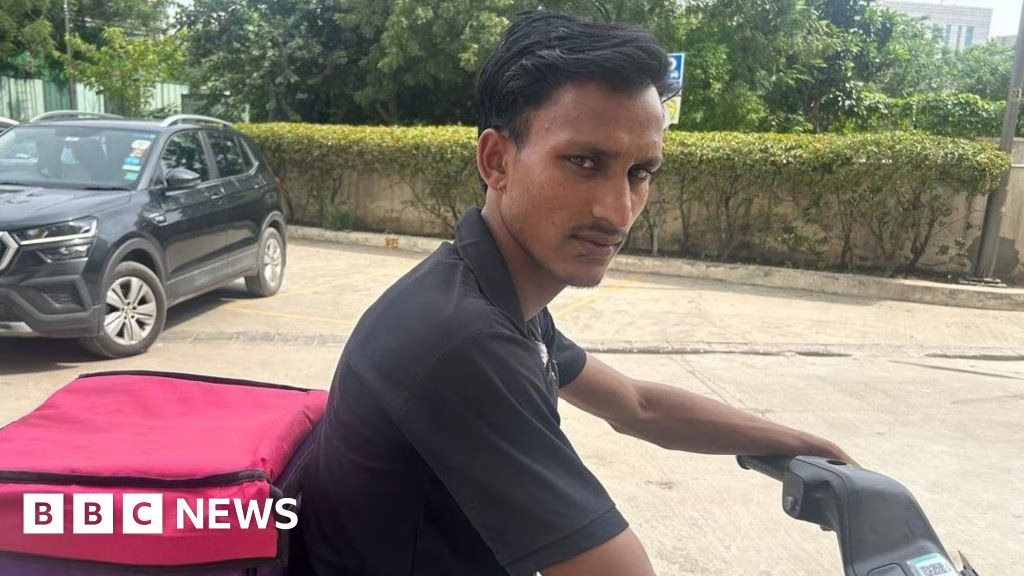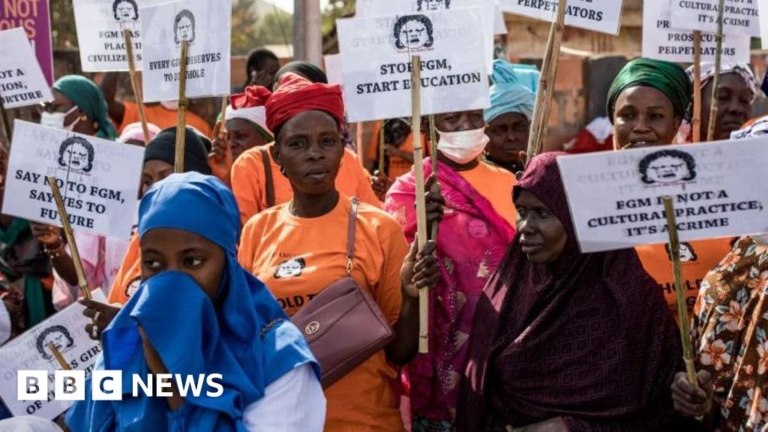(live)(a28d4b90-5caa-11f0-b5c5-012c5796682d)(hq-480-480).webp)
Priti Gupta
Vineet Sawant has spent the last two years navigating the streets of Mumbai on a scooter as a delivery driver.
“Being on the road is always very stressful and especially in cities like Mumbai,” he says.
But when he started out language barriers were an additional problem.
His first language is Marathi and Mr Sawant speaks “very little” English. “I can understand but it’s very difficult to read,” he explains.
That caused problems at his new job.
He said: “At first, it was difficult. Everything was in English, and I can understand some of it, but I’m more comfortable in Marathi. I used to ask other delivery guys to help me figure out what to do.”
His employer, Zepto, promises “India’s Fastest Online Grocery Delivery”. So having drivers struggling with delivery instructions was not ideal.
To smooth this process a year ago, Zepto partnered with Reverie Language Technologies to introduce an AI translation service for its drivers.
Since then its delivery drivers have been able to choose between six languages on the Zepto app.
“I don’t have to guess anymore,” says Mr Sawant.
“Earlier I would take more time to read and sometimes even made mistakes. Now if the customer writes ‘ring bell’, I get that instruction in Marathi. So, I don’t have to ask or check again. It’s all clear.”
(live)(18625be0-571e-11f0-82f9-ffcaa67a8d94)hq-640hq.webp) Getty Images
Getty ImagesMr Sawant’s difficulties are common.
“India has 22 official languages and hundreds of dialects,” says Professor Pushpak Bhattacharyya, from IIT Mumbai, one of India’s leading experts in the use of AI in Indian languages.
“Without tech, that understands and speaks these languages, millions are excluded from the digital revolution – especially in education, governance, healthcare, and banking,” he points out.
The rollout of new generative AI systems, like ChatGPT, has made the task more urgent.
Vast amounts of data, like web pages, books or video transcripts are used to train an AI.
In widely spoken languages like Hindi and English that is relatively easy to get, but for others it is more difficult.
“The main challenge to create Indian language models is the availability of data. I’m talking about refined data. Coarse quality data, is available. But that data is not of very high quality, it needs filtering,” says Professor Bhattacharyya.
“The issue in India is for many Indian languages, especially tribal and regional dialects, this data simply doesn’t exist or is not digitised.”
Reverie Language Technologies is now deploying its AI-driven translation technology for a range of Indian companies.
Co-founder Vivekananda Pani says that while translation technology will make communication easier, there is “potential for less common dialects to be pushed aside”.
“The challenge will be to make sure that the amazing benefits of AI-driven language advancements don’t accidentally shrink the rich variety of human language.”
To help tackle the problem Professor Bhattacharyya has contributed to Bhashini, a government project to develop those high quality datasets needed to train an AI.
As well as the datasets, Bhashini has built AI language models and translation services in 22 languages.
Started in 2022, it’s a huge undertaking, but has already made a lot of progress.
Bhashini currently hosts 350 AI-based language models that have processed more than a billion tasks.
More than 50 government departments work with Bhashini, as well as 25 state governments.
For example Bhashini tech is used in multi-lingual chatbots for public services and to translate government schemes into local languages.
“Bhashini ensures India’s linguistic and cultural representation by building India-specific AI models rather than relying on global platforms,” says Amitabh Nag, CEO of Digital India, Bhashini Division.
He hopes that within the next two or three years rural users will have voice-enabled access to government services, financial tools and information systems in their native languages.
(live)(18625be0-571e-11f0-82f9-ffcaa67a8d94)hq-640hq.webp) Getty Images
Getty ImagesThese India-focused datasets will hopefully one day give people developing AI-based models the tools to make it much easier to adapt them for the entire population.
Currently, designing any AI programme to deal with complex processes such as healthcare can be extremely challenging.
Kshitij Jadhav, an associate professor at the Koita Centre for Digital Health at IIT Mumbai, is working on an AI programme which would help people quit smoking.
He explains that people at different stages of the process need different advice and they usually need a well-trained human to make that assessment.
But there are a limited number of practitioners who can help, particularly those that can operate in multiple languages, so Professor Jadhav is hoping his AI model can bridge the gap.
The AI “will first identify the kind of conversation the person needs and accordingly will frame questions, show empathy, emotions,” says Professor Jadhav.
And all that, hopefully, will eventually be done in 22 languages. Initial experiments are underway in English and Hindi.
“It will be very customized, it will not be something just off the shelf,” he says.
Back on the streets of the city, Vineet Sawant has increased the number of parcels he delivers from ten to around 30 a day, helped in part by the translation function in the delivery app.
He thinks it will help more people like him.
“It makes us feel like we belong. Not everyone understands English. When the app speaks our language, we feel more confident, and we work better.”
Source: https://www.bbc.com/news/articles/cn0qqzz1e4zo?at_medium=RSS&at_campaign=rss










